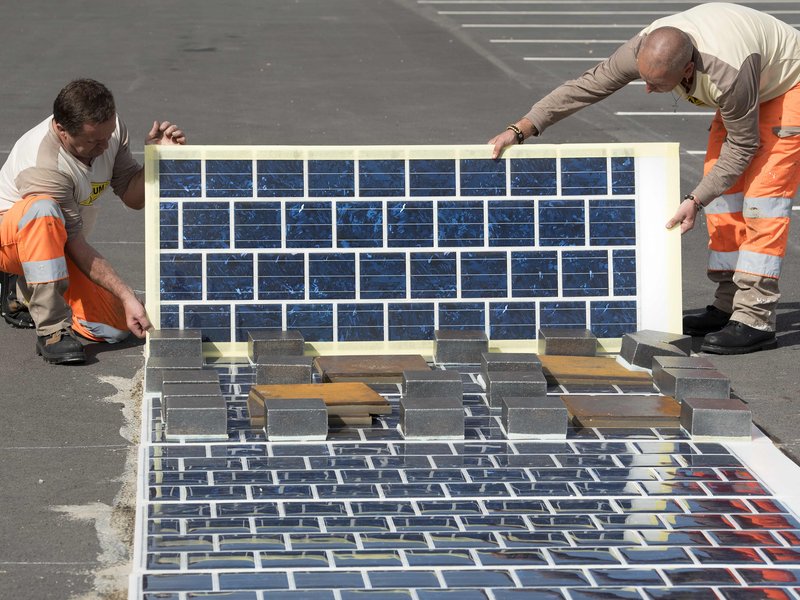We pay a lot of attention to energy around here, so it won’t come as a surprise that our newsfeeds are always brimming with buzz about what’s powering our world. Here are five recent stories about renewable energy that we’ve found encouraging to read:
California Launches First Program to Provide Solar for Low-Income Renters
Solar power has a reputation for being solely for homeowners with disposable income, but California is setting out to change that with the Multifamily Affordable Solar Housing (MASH) program. MASH’s goal is to install a minimum of 300MW of rooftop solar onto multifamily affordable housing projects.
This is great to hear because while there have been some community solar programs for renters able to pay for solar popping up across the country, solar hasn’t really been accessible to low-income renters until now. The more people who have access to renewable energy, the better, in our opinion. Not to mention that the savings from solar will ease the financial burden on low-income families. (Source)
Congress Extends Tax Credits that Encourage Investment in Renewables
In mid-December of 2015, Congress extended the Production Tax Credit and Investment Tax Credit that experts say will be a major boon to the solar and wind power industries. This is because the extensions will support tens of billions of dollars in new investment. The prospect of eager investors is especially important to these industries because while they are expected to become the cheapest way to generate power in the US by 2020, they aren’t the cheapest yet, and the extension of the tax credits can fill in the financial gap between now and the predicted lower costs in 2020. (Source)
Not only is this exciting because it means that the futures of solar and wind are more assured, it’s the result of bipartisan compromise! (Source)
Costa Rica was 99% Powered by Renewables in 2015

Running an entire country on only renewable energy seems like an insurmountable challenge, but Costa Rica came within a hair’s breadth in 2015. According to the Costa Rican Energy Institute, the entire nation of Costa Rica was 99% powered by renewable energy sources in 2015. In fact, for 285 days out of the year, the country was 100% powered by renewable energy. Three-quarters of Costa Rica’s power comes from hydroelectric plants, and the rest from geothermal, wind, biomass, and solar.
While the US is still dragging its feet over reducing coal usage, it’s encouraging to hear that other countries are stepping up to the renewables plate successfully. Here’s hoping the US can use Costa Rica as a role model!
A Supreme Court Ruling Puts Demand Response on Solid Ground
Demand response is (to steal from our upcoming post all about demand response) a program promoted by the government to deter end users from using energy during periods of high demand. Just as hotel resorts offer cheaper prices during the off-season and increase prices during peak season to balance the flow of vacationers, energy providers offer financial incentives to users that run their appliances during off-peak periods.
Demand response didn’t stand on solid legal footing until January of 2016, when the Supreme Court ruled in favor of the Federal Energy Regulatory Commission (FERC) in Federal Energy Regulatory Commission (FERC) v. Electric Power Supply Association (EPSA). The case was brought to court because EPSA objected to FERC’s Order 745, which compensated providers of demand response identically to traditional electricity generators in wholesale markets, claiming that Order 745 overstepped FERC’s jurisdiction.
By ruling in favor of FERC, the Supreme Court placed demand response on firm legal footing, which will have substantial effects on the demand response market. Organized markets which had demand response plans on hold will have the confidence to move forward, which some analysts say could add tens of millions of dollars to the demand response market this year. (Source)
This is good news for a couple reasons. More demand response means that energy usage will be more evenly spread out over the day, reducing the likelihood of the system being overtaxed, causing blackouts. It also means that the need to add more grid capacity is reduced, which translates to lower electricity prices for consumers. Lastly, it’s better for the environment, because demand response both provides financial incentives to reduce energy usage, and gives consumers incentive to switch to other sources of energy, or move consumption to parts of the day when they can take advantage of solar power.
France Announces Plan to Pave 1000 km of Road with Solar Panels

You may have heard about solar-powered roads before- the dream to replace asphalt with miles and miles of shining, car-proof, clean energy generating solar panels. There have already been a few experiments with putting solar panels on roads, but France’s plan is by far the most ambitious.
The five-year plan, announced by the French minister of Ecology and Energy in late January 2016, involves paving 1000 km of French highways with photovoltaic panels, which would generate enough energy to supply power to 5 million people, or 8% of the French population.
If you’re already wincing in sympathy for French drivers who will have to maneuver around construction until 2021, worry not! The solar panels are especially designed to be installed on top of pre-existing asphalt, meaning installation can move forward comparatively quickly, and most importantly, without jackhammer noises. The panels are also supposed to be durable enough to withstand twenty years worth of traffic, and be no more slippery than a normal road. (Source)
It’s encouraging to see this commitment towards a large-scale renewable energy project, and we’re hoping that the US isn’t far behind!
